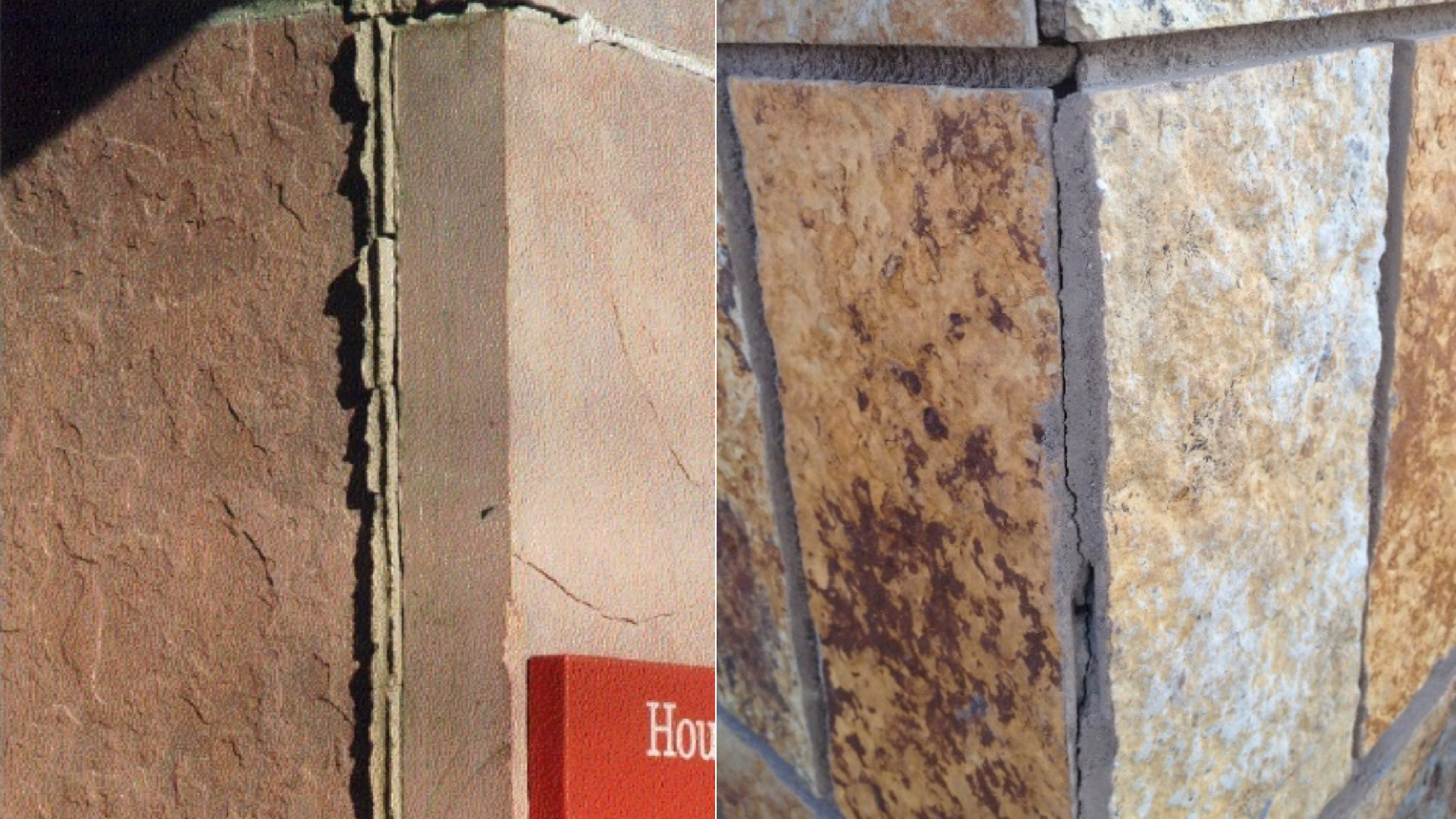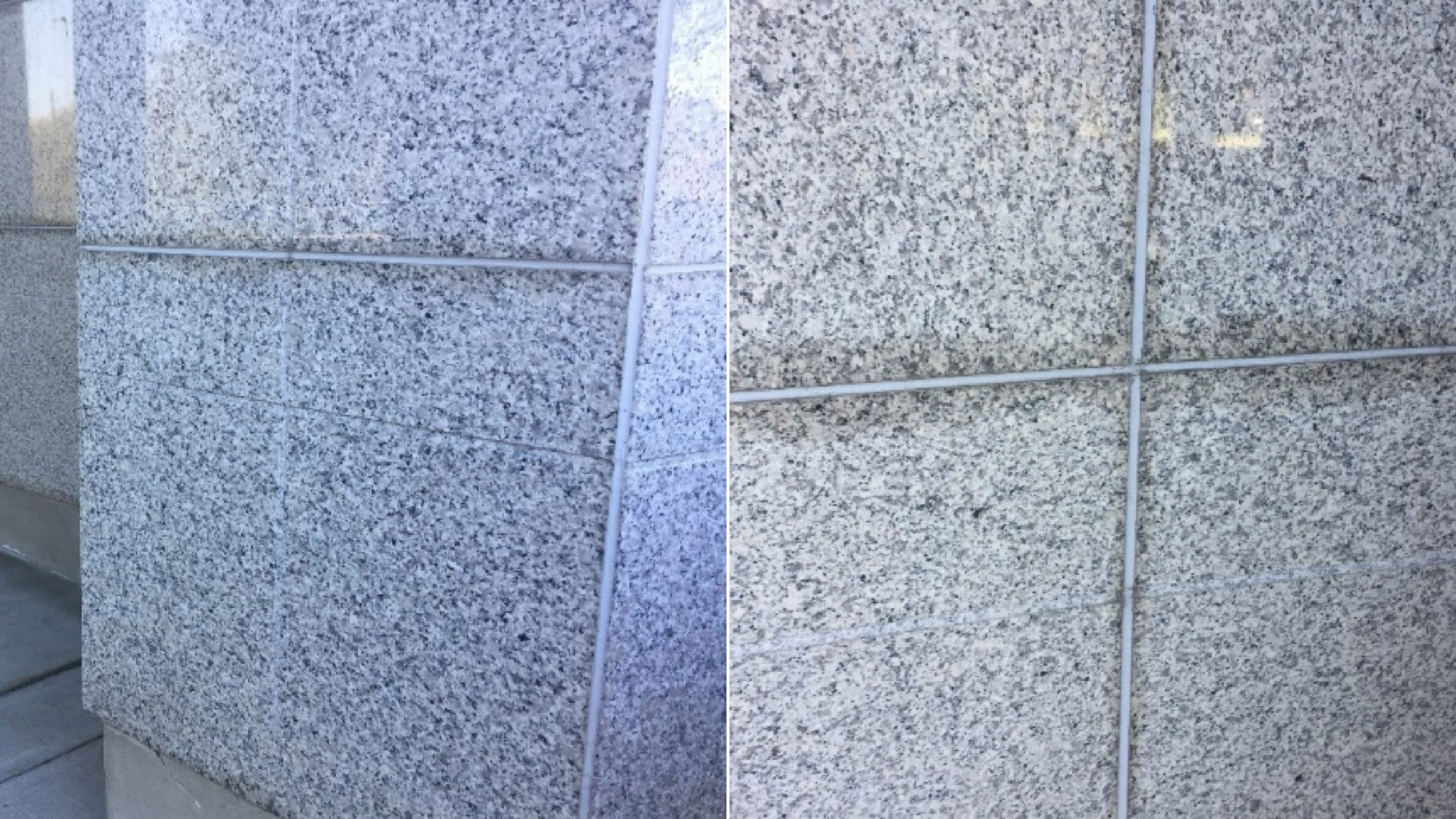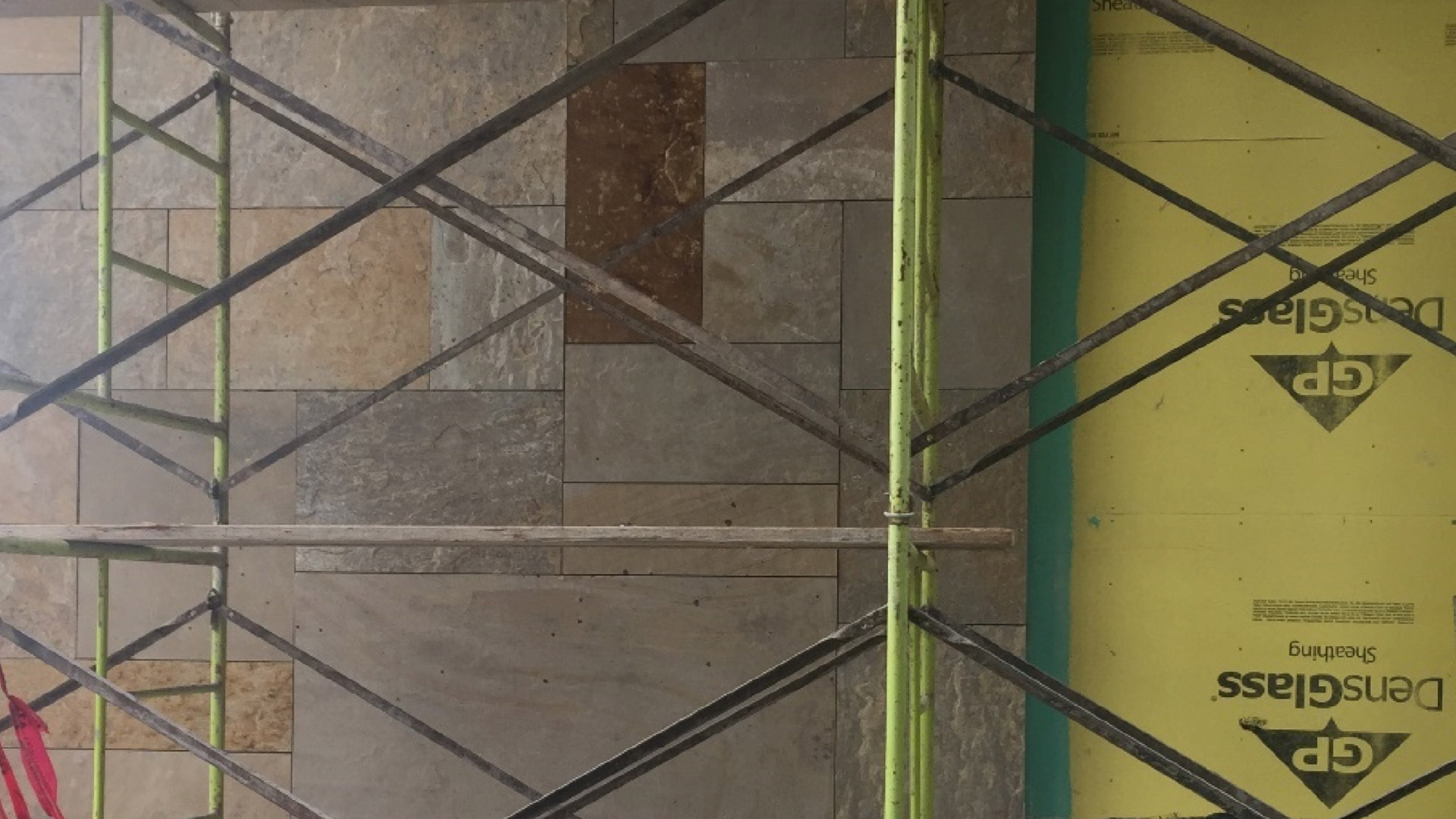Joints: Joints in Stone Panel Veneer Systems
Words: Michael Schuller
Cracked mortar joints. Flexible sealant over backer rod would have been a better choice for these joints.
Stone panel veneer slabs are large and stiff, and joints between stones must serve several important functions:
- Accommodate stone dimensional and setting tolerances.
- Carry vertical loads from panel to panel, down to the foundation, shelf angles, or other support points.
- Provide a weathertight seal.
- Relieve stress that concentrates at the joints, as the stone and backup structure deflects and moves. Movement is caused by dimensional changes due to temperature and moisture wetting cycles, building movement, and veneer movement in response to loads, and is particularly problematic with flexible backup systems such as steel or wood stud construction.
Joints may be filled with mortar, sealant, or left open with special rain screen wall systems. When the stone panels move (and they always will), movement is concentrated at the joints. If joints are filled with mortar, they often crack and fail prematurely because the stone is stiff and all flexure and movement is taken at the joint. Flexible sealant can accommodate this slight movement whereas mortar cannot. Some contractors know mortar joints in stone panel veneer systems will crack and make the designer write off on using mortar with larger stones.
Several industry standards and publications provide guidance on choice of joint filling material. One rule of thumb is to use flexible sealant at joints if stone pieces exceed 16” square. TMS 604, Standard for Installation of Architectural Cast Stone (published by The Masonry Society) requires flexible sealant be used at joints when the stone area exceeds 3.75 ft2. Smaller units may be laid with fully mortared head joints and bed joints (using Type N mortar) or dry-set, using shims at each bed joint. Joints in dry-set masonry are sealed with sealant over backer rod. ASTM C1242-05, Standard Guide for Selection, Design, and Installation of Dimension Stone Anchoring Systems, calls for compressible gasket or sealant at joints between stone panels. No matter what is used at joints all stone panel systems should incorporate flashing and weeps. Joint materials are designed to keep weather out but are never fully waterproof.
Mortar joints
If mortar is used at joints between stone units it is best to avoid Type S and Type M mortars. These mortars have a high cement content and, while they are strong, they have a tendency to be brittle and crack or debond when subjected to movement. Type N mortar has a lower cement content, is more elastic, and better able to flex slightly when either the wall or the backup system moves. A typical Type N mortar has volumetric proportions of 1 part portland cement, 1 part Type S hydrated lime, and 5 to 6 parts fine masonry sand, following ASTM C270 requirements. Type N mortar is recommended for use with stone installations by the Indiana Limestone Institute, the Natural Stone Institute (Marble Institute of America and the Building Stone Institute), and required for use with cast stone by TMS 604.
One way to reduce cracking as mortar hardens is to rake back setting mortar 3/4 inch right after placing the panels. Final pointing and tooling is done later, to provide the outer weather surface and seal to be weather-proof. Wait to point raked joints as long as you can, letting construction proceed as far as possible. This will reduce the chance of cracks developing in pointing mortar as new stones are laid above.

Some flexible sealants may bleed into stone, leaving dark margins around joints. Talk to your sealant provider to make sure the proper sealant is used.
Sealant joints
With larger sized units, stones are placed with or without a mortar setting bed, using shims to provide the specified joint thickness. Sealant joints are usually 1/4” or even 1/8” wide – much thinner than a typical mortar joint. When units are set in mortar, rake back the setting bed to provide space for backer rod and sealant at the wall face. Backer rods are placed at the correct depth in joints to control sealant depth, support sealant during tooling, and as a bond breaker to prevent 3-sided adhesion. Joint tape can also be used over raked mortar instead of backer rod.
Flexible joint sealants must be non-staining. Silicone sealant have excellent durability and bond, but solvents in some silicone sealants tend to bleed into adjacent stones, leaving a wide, greasy stain (see photo). Urethane or polyurethane sealants are usually a better choice to reduce bleed. Sealant manufacturers and stone suppliers are the best sources for information on sealant usage, compatibility with different stone types, and resistance to staining. Mockups and testing is a good idea, to make sure sealant is compatible and provides the desired appearance.
Be sure to clean joint surfaces prior to sealant installation to remove dust and contaminants for good adhesion. Some sealants also require priming stone surfaces to get good bond. Even with very dense granite and bluestone units, stone edges may need to be pre-treated to prevent absorption and staining.

Stone panel veneer used as part of a rain screen system, with narrow unfilled joints open to the drainage cavity.
No Joints – Rain Screen System
Rain screen systems have been popular in Europe for years and are beginning to see usage in the United States. Joints in a rain screen system are unfilled, and all weatherproofing is installed at the face of the structural backup (see photo). Open joints equalize wind pressure throughout the system, reducing moisture penetration, and also promote drying by permitting air circulation within the cavity and around stone panels. Vertical stone weight is transferred through anchorages or using shims placed in the joints.